It's Official: Kawasaki Announces The 2023 Ninja ZX-4RR KRT

Kawasakis latest pocket rocket will rev to over 15,000 rpm.
One of the worst-kept secrets in motorcycling is now a secret no more: Kawasaki has announced the Ninja ZX-4RR KRT will be coming to the US in 2023, (hopefully) ushering in a revival of 400cc four-cylinder sportbikes that were all the rage in the 1990s. But unlike the current parallel-twin Ninja 400, which is essentially a budget bike dressed in sportbike clothes, this newest model is worthy of the ZX prefix, as it boasts proper suspension, twin radial brakes, a full electronics suite, and chassis geometry inspired by its ZX-6R and ZX-10R siblings – oh, and let’s not forget – a compact four-banger that will rev to over 15,000 rpm! But more on all those things in a minute.
Join the Kawasaki Ninja ZX-4R Forum
First, if you’re a longtime MO follower, this shouldn’t surprise you. Our resident sleuth, Dennis Chung, broke ground on this new bike over a year ago – in May of 2021, to be exact, when Kawasaki applied for a patent for an air duct to drive air around the radiator and header pipes to help cool the engine directly. Dennis followed that up in August of 2022 when Kawasaki filed VIN submissions for an upcoming ZX-4. However, in an effort to bring Dennis’ non-existent ego back to Earth, let’s nitpick one little thing: He got the number of Rs wrong (for the US at least – he still suspects a single R will come to other markets). The suffix should include two Rs, along with three more letters: KRT (Kawasaki Racing Team). This suffix matters because a double-R Kawasaki Ninja is meant to be a thoroughbred track weapon.
Is it? On paper anyway, it sure seems so. Without further ado, let’s take a closer look at the long-anticipated Ninja ZX-4RR.
Engine
We can’t start anywhere else but the engine. As you know, it’s a 399cc, liquid-cooled inline-four with dual overhead cams. Bore and stroke measure 57.0 x 39.16mm, for an oversquare engine capable of such high rpm. The ECU is similar to the one on the Kawasaki Z H2, which allows for the use of Kawasaki’s latest electronics. Electronic Throttle Valves (ETV) with 34mm throttle bodies feed air and fuel to the engine and also facilitate the use of all the rider aids we’ve come to expect from today’s sportbikes, like traction control, power modes, and even the bi-directional quickshifter.
Looking at the cylinder head, the intake port interiors are sand cast, using fine sand, which results in a smooth finish. Similar to the Ninja ZX-10R, the intake port exits have been machined in two stages, first along with the valve seats and then again at an inclined angle, to create a straighter path for intake air into the combustion chamber. This promotes a smoother flow and a greater volume of fuel-air mixture. Lightweight forged camshafts contribute to the high-rpm performance. Triple-rate valve springs keep the valves in check, even at high rpm.
The intake valves themselves are large, measuring 22.1mm, and are complemented by 19mm exhaust valves, flowing a great volume of air necessary for high engine speeds. A narrow valve angle of 24.8º not only helps combustion efficiency but also helps in designing a compact cylinder head and overall engine. The combustion chambers are precision machined to high tolerances – a production technique that is limited to Kawasaki’s high-performance premium models.
The tiny little pistons are cast aluminum for low reciprocating weight and quick-climbing revs. Also, to help achieve that lofty engine speed, the piston skirts are relatively short and have a molybdenum coating for increased durability. Compression ratio is a modest 12.3:1, which Kawasaki says allows the use of “regular gasoline.” We’re not sure if that means using octane as low as 87 (not that we do anyway), but we can already see aftermarket tuners playing with compression ratios and ignition timing to take advantage of race gas. Utilizing an aluminum die-cast cylinder with an open-deck design, excellent heat dissipation and low engine weight is achieved.
The Kawasaki press release continues:
In order to reduce mechanical loss and vibration, Kawasaki engineers carefully selected the connecting rod ratio, while a special carburizing treatment was used on the connecting rods to improve durability and reduce weight. Thanks to the crankshaft’s light flywheel mass, a low moment of inertia was reached, contributing to a quick-revving engine character and direct throttle response. A deep oil pan ensures that the oil pump inlet is always submerged, blocking air from being ingested, even during hard acceleration and deceleration while sport or track riding.
Keeping the engine cool is obviously a high priority, and the water jackets were carefully designed for this purpose. Even the long-reach spark plugs offer more contact with the water jacket to help prevent engine knocking. There’s a large, 30-row radiator to keep the coolant temps under control, and the patented air duct mentioned at the top of this story is actually a radiator fan cover that is located behind the radiator to move hot air out to the sides and away from the rider. Ducts built into the fairings funnel air towards the radiator to bring coolant temps down.
A true “mini” superbike, the ZX-4RR has a functional ram air scoop at the front of its nose, just like its ZX-6R and ZX-10R siblings. Using a similar layout to the Ninja H2, the Ram Air duct is routed to the left of the front fork on its way to the airbox. This contributes to a duct with a highly efficient airflow, enabling cool, high-pressure air from the front of the bike to be ingested. Additionally, the design is extremely effective at preventing water from entering the airbox while riding in the rain. And just in case you forget, the large Ram Air duct has “Ram Air” stamped into it. Maybe you can show it off to your friends…?
The intake funnels are 60mm and 40mm for efficient filling and produce a flat torque curve with smooth power delivery. The downdraft intake creates a shorter, more direct path for intake air to enter the cylinder, improving cylinder-filling efficiency and increasing engine power at high rpm.
Putting the power to the ground is a six-speed gearbox with Assist & Slipper clutch. The assist function clamps the clutch pack tighter while also providing a light clutch, and the slip function allows the clutch to slip a little to prevent rear-wheel hop in the event of a sloppy downshift. Of course, you won’t make any sloppy downshifts because the ZX-4RR comes with a bi-directional quickshifter.
Ultimately, everyone wants to know what kind of power it’s making. The answer is… we don’t know. Kawasaki has only revealed that it makes a peak of 26.5 lb-ft of torque at 11,000 rpm. Our guess is peak power will be around 40-50 hp. Nonetheless, we’re already excited at the power the aftermarket will be able to pump out of one of these.
Chassis and Suspension
Unlike its ZX-6R and ZX-10R brothers, the ZX-4RR doesn’t use a perimeter beam frame. Instead, there’s a steel trellis frame of various pipe diameters and thicknesses to achieve specific rigidity and chassis flex, utilizing feedback learned directly from the KRT World Superbike team. What kind of feedback? Things like the center of gravity position, swingarm pivot position, engine axis positions, and caster (aka rake) angle were just some of the dimensions inspired by the ZX-10RR. The long, steel swingarm allows for optimum front/rear weight distribution, while the arch design of the right side not only looks cool and draws a balance between rigidity and flex, but it also gives the space needed to fit the silencer as centrally as possible.
Showa provides suspension for both Kawasaki’s World Superbike team and its production models, and the ZX-4RR is the latest to benefit from this collaboration. In the front is Showa’s 37mm SFF-BP (Separate Function Fork – Big Piston) with spring rates and valving specifically for the mixed-use conditions the ZX-4RR will see on the street and track. As the name suggests, each fork leg separates the suspension functions. The left tube handles preload adjustments, while the right tube handles the damping changes. Unlike a cartridge fork, however, the fork tube itself acts like a cartridge, allowing a bigger piston to be used. Hence the name. Unfortunately, the ZX-4RR falls short in that it only offers preload adjustment up front. If you were hoping to be able to change the compression or rebound settings, sorry. You’re hosed.
However, at the rear is Showa’s BFRC (Balance Free Rear Cushion) shock mounted via linkage above the swingarm, placing the shock further away from the heat generated from the engine and exhaust. The shock is similar to the one on the ZX-10R but obviously tuned differently for the smaller bike. Unlike the front fork, the shock has adjustability for preload, compression, and rebound damping.
Another bit of good news is the ZX-4RR’s star-pattern five-spoke wheels come stock with Dunlop Sportmax GPR-300 tires. The front is a standard 120/70 size, and the rear is a 160/60, meaning there are lots of exceptional tire choices.
Then there’s the weight. With a curb weight of 414.5 lbs, the ZX-4 is about 50 lbs heavier than the current Ninja 400 (361 – 366 lbs), and less than 20 lbs lighter than the ZX-6R (425 – 430 lbs). A sub-400-lb curb weight would have been nice, but time will tell if it feels lighter than it actually is.
Electronics
On the surface, it seems silly for a 399cc motorcycle to have an electronics suite, but as a bike with two Rs in its name, it does make more sense. Plus, since the bike already has fly-by-wire throttle, the components are already in place to incorporate TC. Hence, the ZX-4RR sees the KTRC system applied here. Adjustable in three different levels (four if you include Off), Kawasaki fails to mention anything regarding an IMU in its press materials, which leads us to believe that it’s a reactive TC system instead of a predictive one – which seems fine for a bike like this.
In addition to KTRC, the 4RR also gets two-level Power Modes, and integrated Riding Modes (Sport, Road, Rain) with preset power and TC settings. A fourth mode, Rider, is a manual mode that allows you to set the power and TC settings independently.
Information is displayed via a 4.3-inch TFT not too dissimilar from the one on the ZX-10R. Apart from the standard menu that gives you road speed, engine speed, and the like, there’s also a Circuit Mode screen that shows track-related information front and center, including a lap timer. There’s also the ability to connect the ZX-4RR to Kawasaki’s Rideology App to view vehicle info, riding logs, mobile phone notices, and more.
Ergonomics/Styling
In case you haven’t noticed yet, this is a supersport bike, through and through. Clip-ons are mounted below the triple clamp, and the pegs are slightly behind you (though they don’t appear to be too high in the photos). You’re going to be in the racer position with weight over your wrists, which will be especially apparent if you’re coming off, say, the current Ninja 400 and its comparatively upright bars. That said, as we look at these photos, the seat, which is 31.5 inches off the ground (compared to the Ninja 400’s 30.9-inch seat height) looks cramped for average-size adults. The 3.96-gallon tank, too, is narrow, which is great for feeling slim on the bike and for being able to put a foot down but might pose a problem when it comes to finding an anchor point for the outside leg as you’re slicing through a turn.
Being part of the ZX family, the resemblance to its bigger siblings is striking, albeit expected. Classic Ninja styling carries over to the ZX-4, with sharp, angled styling throughout, capped off with the signature aggressive and angled nose section and huge ram air scoop borrowed from the ZX-6R and influenced by the previous-generation ZX-10R.
There’s One Big Catch
So far, the ZX-4RR sounds like a bike any sportbike fan can get behind, right? Well, if you remember, the 400cc four-bangers of 30 years ago all disappeared because they simply became too expensive for their own good. The 2023 Kawasaki Ninja ZX-4RR KRT Edition carries a retail price of $9,699. Might we be on the verge of seeing history repeat itself?
For some perspective, that’s nearly $4000 more than the current Ninja 400 and only $1000 less than the base ZX-6R. Granted, as someone who loves (and owns) small bikes, I’ll be the first to say that the value of the ZX-4RR shouldn’t be measured in horsepower. But with pricing so close to bigger bikes, something tells me the initial hype surrounding the ZX-4 will fade fast before riders lust for horsepower again. If there’s any hope for more small-bore screamers to make their return, then Mr. Chung’s prediction of a Single R version coming here with a lower price tag will have to come true. Time will tell.
In the meantime, there’s no denying we’re looking forward to throwing a leg over the Ninja ZX-4RR.
2023 Kawasaki Ninja ZX-4RR KRT Specifications | |
|---|---|
MSRP | $9,699 |
Engine Type | 4-Stroke, Liquid-Cooled, DOHC, 4 Valves Per Cylinder, Inline 4 |
Displacement | 399 cc |
Bore and Stroke | 57.0 x 39.1 mm |
Compression ratio | 12.6:1 |
Horsepower | NA |
Torque | 26.5 lb-ft. at 11,000 rpm (Claimed) |
Fuel system | DFI w/34mm Throttle Bodies(4) |
Ignition | TCBI with Digital Advance |
Transmission | 6-speed KQS with Positive Neutral Finder |
Final drive | Sealed Chain |
Clutch | Wet multi-disc, Slip/Assist |
Frame | Steel Trellis |
Front Suspension | ø37 mm Inverted SFF-BP Fork with Adjustable Preload and Top-out Springs |
Rear Suspension | Horizontal Back-link with BFRC lite Shock with Piggyback Reservoir, Adjustable Preload, Compression, and Rebound Damping, Top-out Springs |
Front Tire | 120/70-17 |
Rear Tire | 160/60-17 |
Front Brake | Dual Semi-floating 290 mm Discs with Radial-mount, Monobloc Opposed 4-Piston Calipers |
Rear Brake | Single 220 mm Disc with Single-Piston Caliper |
Caster (rake) | 23.5° |
Trail | 3.8 inches |
Overall length | 78.4 inches |
Overall width | 30.1 inches |
Overall height | 43.7 inches |
Wheelbase | 54.3 inches |
Seat height | 31.5 inches |
Curb Weight | 414.5 pounds (Claimed) |
Fuel capacity | 3.96 gallons |
Warranty | 12 months |
Kawasaki Protection Plus | 12, 24, 36, or 48 months |
Become a Motorcycle.com insider. Get the latest motorcycle news first by subscribing to our newsletter here.

Troy's been riding motorcycles and writing about them since 2006, getting his start at Rider Magazine. From there, he moved to Sport Rider Magazine before finally landing at Motorcycle.com in 2011. A lifelong gearhead who didn't fully immerse himself in motorcycles until his teenage years, Troy's interests have always been in technology, performance, and going fast. Naturally, racing was the perfect avenue to combine all three. Troy has been racing nearly as long as he's been riding and has competed at the AMA national level. He's also won multiple club races throughout the country, culminating in a Utah Sport Bike Association championship in 2011. He has been invited as a guest instructor for the Yamaha Champions Riding School, and when he's not out riding, he's either wrenching on bikes or watching MotoGP.
More by Troy Siahaan




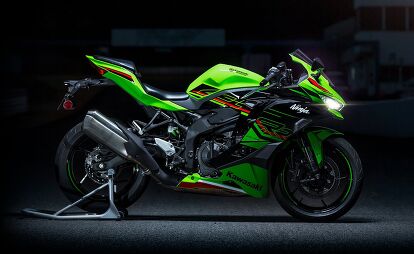





































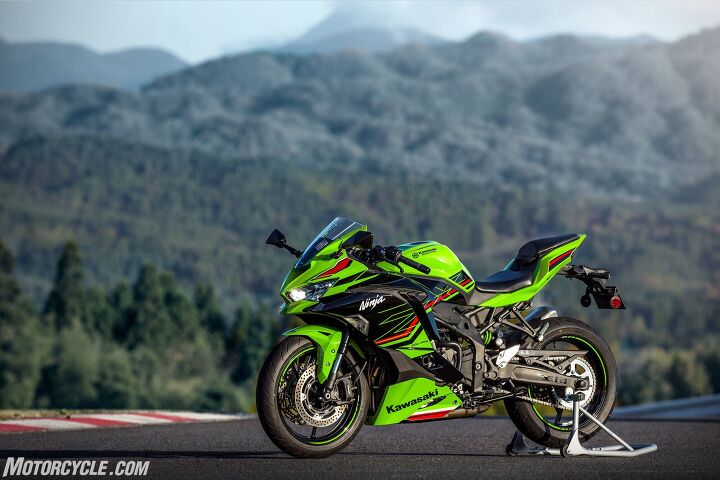






















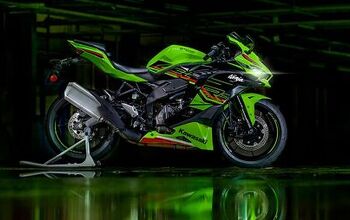
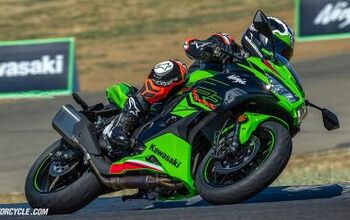



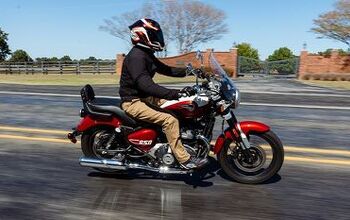




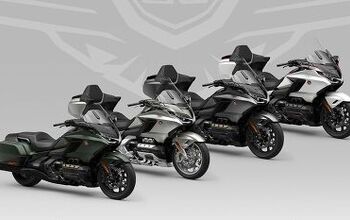




Comments
Join the conversation
Is this a joke?
Its heavy, has crap tires, and nothing really deserving of the insanely high price of $10k.
At the price I'd expect steel braided brake lines, forged or magnesium wheels, IMU, proper track day tires.
You know something to justify that price???
Jewelry